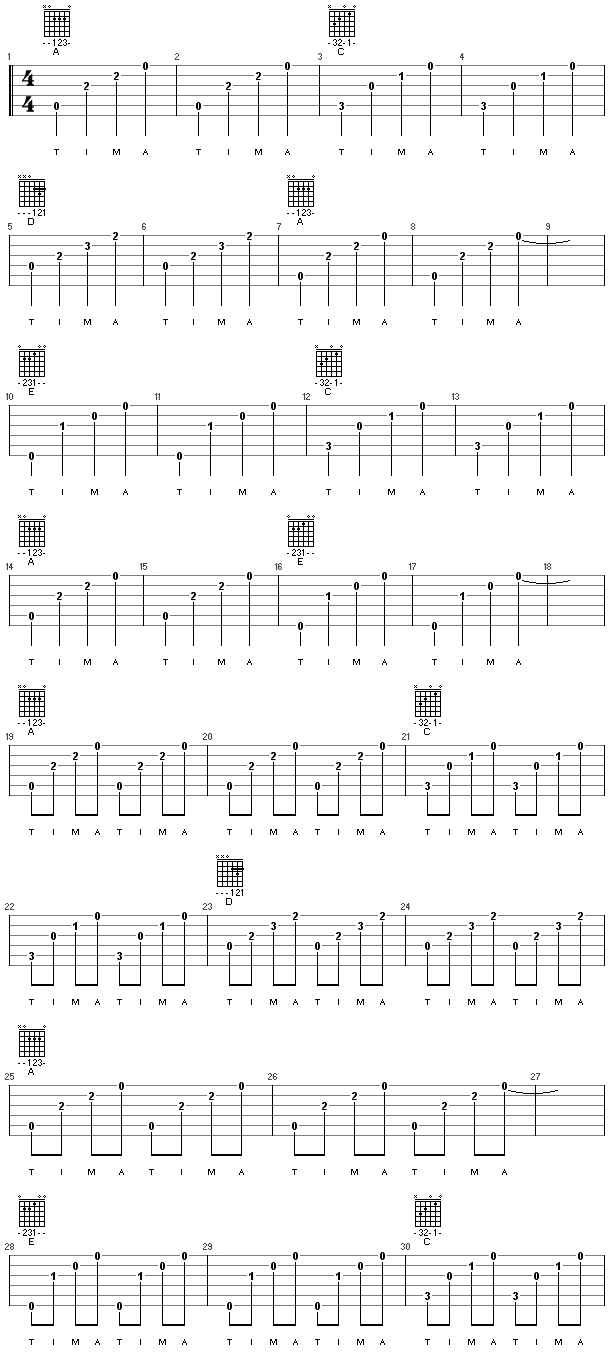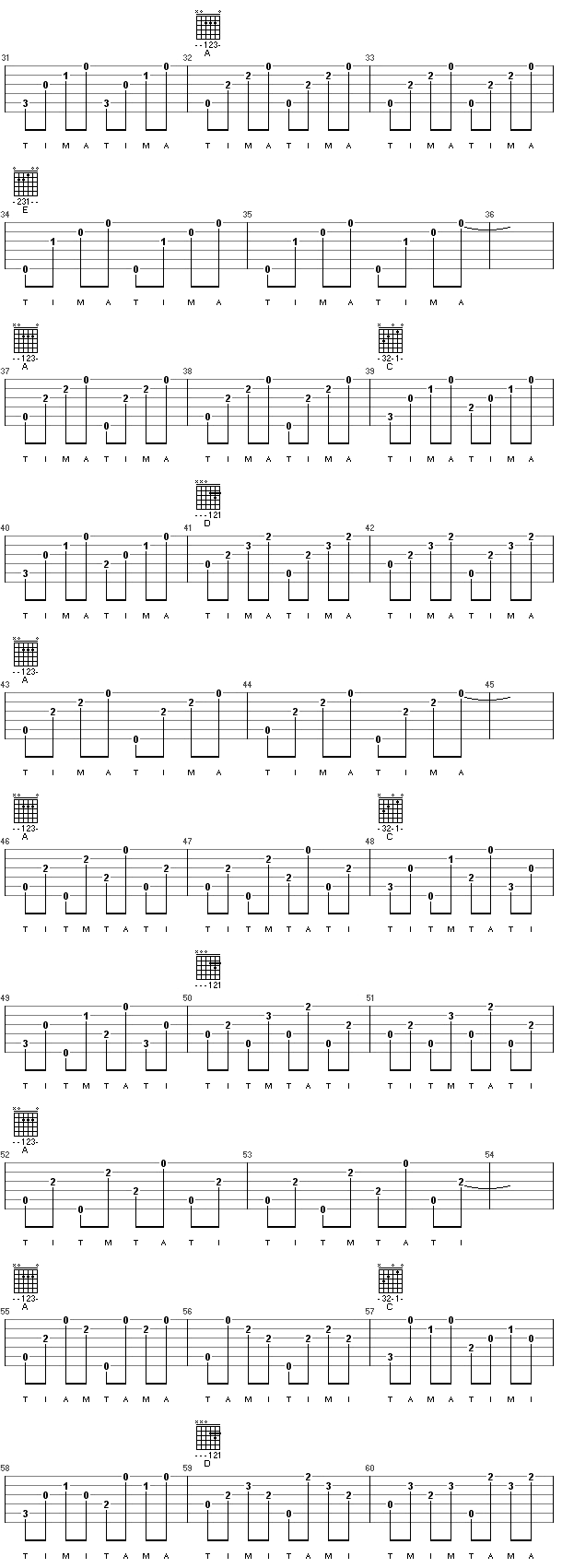Author: Enrique Camacho
Enrique Camacho (blackiel) personal website: http://www.peterlynchmusic.com
Difficulty: easy
Notes: This is to get you started on playing fingerstyle.
This is to get you guitar young 'uns started on playing in the thoroughly rewarding and musically stimulating universe of (you guessed it) fingerstyle.
Your right hand can be in one of two positions. "Hovering" over the strings, or "anchored." Place your little finger near the pick guard and/or bridge. This is your "anchor" point, which you can move around as you play. You don't need to use an anchor all the time, especially if you don't feel comfortable. Do NOT flatten the palm of your hand or curve your fingers too much when playing. How much you curve your wrist is a matter of personal taste. Again, anchors are OPTIONAL.
In fingerstyle, you play arpeggios ("broken" chords) one note at a time (sometimes more than one note, as you can see in the song examples). You play the 6th, 5th, and 4th strings with the thumb, the 3rd with the index, the 2nd with the middle, and the 1st with the ring finger. I suggested right hand fingering throughout the tab. "T" is thumb (also known as "pulgar"), "I" is the index, "M" is the middle, and "A" is the ring (also known as "anular"). The little finger isn't used much in fingerstyle. Remember "PIMA," or "TIMA."
In "Three" and "Four" I used the same chord progressions that "One" and "Two" use, but with eighth notes. "Five" introduces alternate bass notes. With alternate bass notes, you can make a passage sound more interesting; the bass notes being the ones on the 4th, 5th, and 6th strings. "Six" deals with patterns containing something commonly known as "Travis picking." That is, you play a bass note, then a note with your fingers, then a bass note, and so on.
"Seven" contains different picking patterns over the same chords in "Five." There are many different picking techniques. By mixing notes on a chord, a passage can sound more melodic than just picking straight up or down.
I included some fingerpicking songs to practice with which you can find in MSB. Many thanks to the talented tabber which provided us with the "Sad Lisa" tab, and I had absolutely nothing to do with it. This tab was NOT MADE BY ME. I merely added right hand fingering suggestions to make it easier if you're still green, but I suggest you try playing it properly once you reach a certain level. Note: The "House of the Rising Sun" tab WAS tabbed by me, by the way.
Cat Stevens' "Sad Lisa" is one of my favorites. And maybe you recognize the next one? "Dust in the Wind?" Does it ring any bells? That one I got out of Guitar World magazine. I didn't include right hand fingerings in that one because I feel that the proper way to play it is best. Also because I don't feel like it. "The House of the Rising Sun" is a song that you'll probably have learned to play if you've ever taken guitar lessons. In fact, you should play this song properly too.
As I said before, there's a whole universe of finger picking, and you should really get a book dedicated entirely to it. But while you scrape up the dough for it, why not absorb everything in this tab and what's on MSB. I know of one resident fingerstyle composer on MSB, and that's our very own blackiel, if you're interested in listening to original fingerpicking songs. Also, check out "Fingerstyle for Classical Guitar," a tab by aerguin, also on MSB of course.
Remember to change fingerpicking patterns constantly, and try to play smoothly. What I do is that I play a piece as fast as I can until I start to make mistakes. Good luck on your finger picking future.





BluesLesson.net Ebook - "Easy to learn Blues Guitar"
Learn to play Blues the easy way
This guitar course (about 70 pages) is especially written for people who are quite new to playing guitar.
Here you will find all you need to learn how to play the Blues:
* All beginner lessons are included in this ebook!
* You start from the first 12-bar-Blues to your first Blues solo licks.
* You´ll learn about Blues chords, the Blues scale, bendings, vibratos, slide guitar and much more!
...more Information


